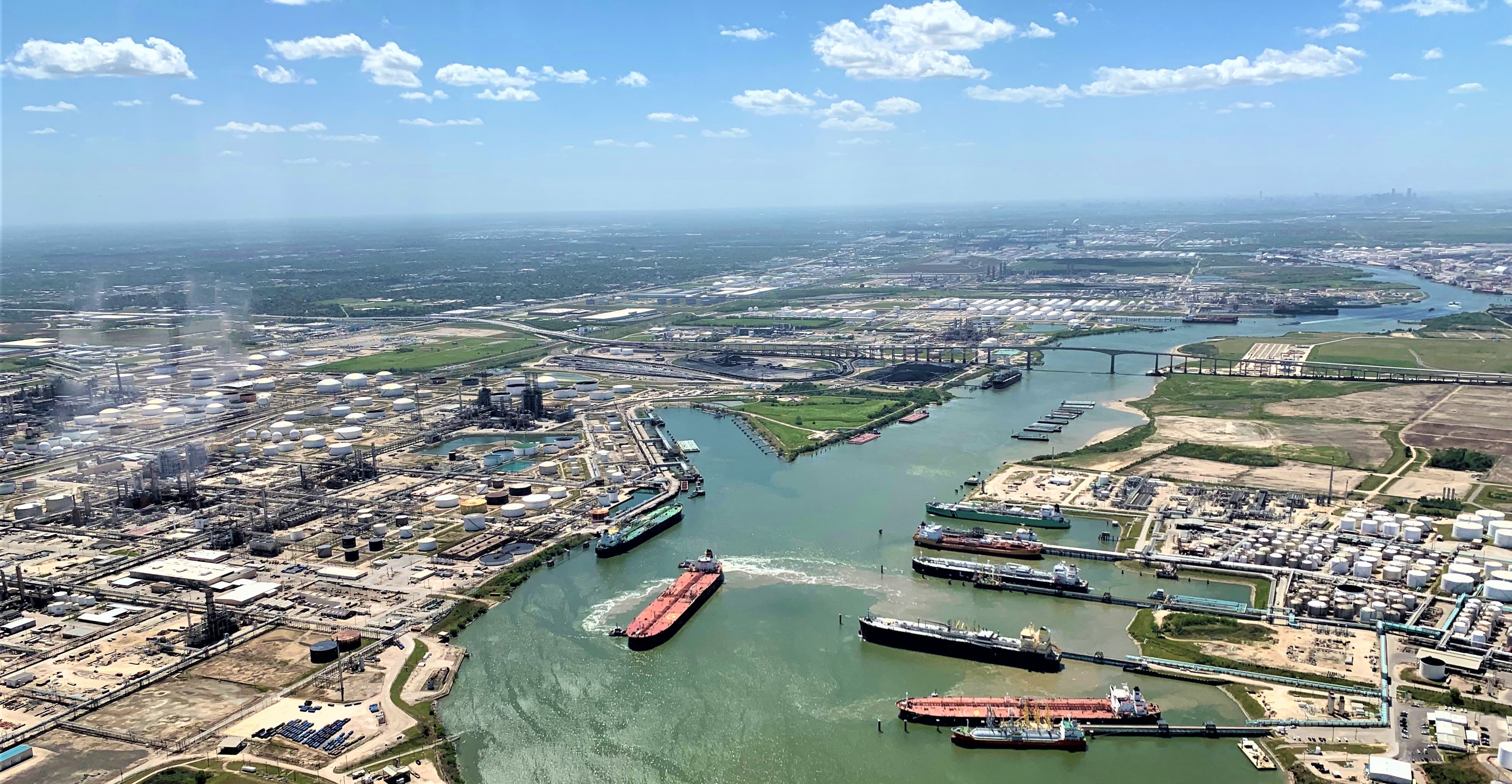Texas 88th Legislative Session Appropriations Benefit Ports

Vessel operations on the Houston Ship Channel. Photo courtesy of Danny Schnautz.
During the 88th Legislative Session, the Texas Legislature appropriated $640 million to assist Texas ports in making critical investments in their facilities. Texas ports are not only vital but integral to our state’s economy, as they generate $308 billion in trade each year and create 1.8 million jobs. The impact of our ports is not solely concentrated on the coast. To allow statewide businesses to be competitive in the global market, strong ports are essential to ensure Texas exports can be distributed worldwide.
For the widespread economic impact of our ports to continue and thrive, various infrastructure improvements are fundamentally necessary. The 2024-2025 Texas Port Mission Plan, which identifies the needs of Texas ports, recommends $9.67 billion in port improvement projects. While all ports generate revenue and invest in their facilities, to remain competitive, they must make essential improvements now. This historic investment from the legislature will result in increased economic prosperity, improved operational impact, and additional benefits, such as environmental sustainability and enhanced air quality.
The Texas Department of Transportation Maritime Division ("MRD") promotes the development and intermodal connectivity of Texas ports and waterways and is excited to partner alongside the Port Authority Advisory Committee ("PAAC") to administer funds appropriated by the legislature through three programs: the Seaport Connectivity Program, Maritime Infrastructure Program, and the Ship Channel Improvement Revolving Fund.
Seaport Connectivity Program
Since 2015, the Legislature has authorized $180 million for the Seaport Connectivity Program (formerly known as the Port Connectivity Improvement Program) to address landside port connectivity projects. Projects cover rural, urban, and metropolitan areas and improve connectivity, enhance safety, and relieve congestion. Example projects include construction of truck queuing lanes in high-traffic areas, development of intersection upgrades, and construction of new public roadways.
Maritime Infrastructure Program
This program covers port infrastructure needs, such as dredging, dock upgrades, and railroad expansions, among many others. One such project in the Port of Victoria includes constructing an additional general cargo dock which will allow the port to move more commodities. The PAAC evaluates proposed projects and makes recommendations to the Transportation Commission on which projects should be considered for funding. The 88th Legislative Session appropriated $200 million to help fund these projects.
Ship Channel Improvement Revolving Fund
The revolving loan program was created to enhance the financing capabilities of entities responsible for the local share of federally authorized ship channel improvement projects. SCIRF funding has not previously been capitalized, but there are eight projects in Texas that are eligible to draw on the fund: the Sabine-Neches Waterway, Cedar Bayou Navigation Channel, Houston Ship Channel Expansion, Galveston Harbor Channel Expansion, Freeport Harbor Channel, Matagorda Ship Channel, Corpus Christi Ship Channel, and Brazos Island Harbor Deepening. The 88th Legislative Session appropriated $400 million for the fund.
In addition to our work with Texas seaports, the MRD focuses its attention on the Gulf Intercoastal Waterway ("GIWW"), a waterborne alternative to transporting cargo within Texas and beyond. Its viability is critical to our economic competitiveness. Moving shipments along the GIWW offers numerous societal and safety benefits: it reduces roadway congestion (reducing maintenance costs), lowers air emissions, and increases the safety of our traveling public, particularly important for cargo owners in the petrochemical industry.
As the non-federal sponsor of the GIWW, TxDOT collaborates with the Army Corps of Engineers to determine improvements required along the GIWW and to acquire land for the placement of dredged material. We are excited to move toward Beneficial Use projects for dredged material whenever possible. Doing so allows us to have a lasting impact on Texas coasts by restoring habitats, developing marshes, or nourishing eroding beaches rather than simply disposing of dredged material.
The MRD continues to explore avenues to add value to the Texas port system and maritime industry. We value strong partnerships with national and statewide policymakers, port and waterway operators, private-sector freight partners, and local communities to strengthen our great state. To partner with us or to learn more about TxDOT’s Maritime Division, please visit www.txdot.gov.
